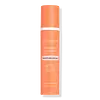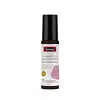What's inside
What's inside
 Key Ingredients
Key Ingredients

 Benefits
Benefits

 Concerns
Concerns

 Ingredients Side-by-side
Ingredients Side-by-side

Water
Skin ConditioningCetearyl Alcohol
EmollientCaprylic/Capric Triglyceride
MaskingGlycerin
HumectantIsopropyl Myristate
EmollientSodium Ascorbyl Phosphate
AntioxidantNiacinamide
SmoothingHelianthus Annuus Seed Oil
EmollientBenzyl Alcohol
PerfumingHydrogenated Ethylhexyl Olivate
EmollientStearic Acid
CleansingButyrospermum Parkii Butter
Skin ConditioningCetearyl Glucoside
EmulsifyingHydrogenated Olive Oil Unsaponifiables
EmollientCarbomer
Emulsion StabilisingParfum
MaskingDehydroacetic Acid
PreservativePolyacrylamide
Pentaerythrityl Tetra-Di-T-Butyl Hydroxyhydrocinnamate
AntioxidantC13-14 Isoparaffin
EmollientSodium Hyaluronate
HumectantLaureth-7
EmulsifyingAlcohol
AntimicrobialTris(Tetramethylhydroxypiperidinol)Citrate
StabilisingCI 19140
Cosmetic ColorantCI 16035
Cosmetic ColorantWater, Cetearyl Alcohol, Caprylic/Capric Triglyceride, Glycerin, Isopropyl Myristate, Sodium Ascorbyl Phosphate, Niacinamide, Helianthus Annuus Seed Oil, Benzyl Alcohol, Hydrogenated Ethylhexyl Olivate, Stearic Acid, Butyrospermum Parkii Butter, Cetearyl Glucoside, Hydrogenated Olive Oil Unsaponifiables, Carbomer, Parfum, Dehydroacetic Acid, Polyacrylamide, Pentaerythrityl Tetra-Di-T-Butyl Hydroxyhydrocinnamate, C13-14 Isoparaffin, Sodium Hyaluronate, Laureth-7, Alcohol, Tris(Tetramethylhydroxypiperidinol)Citrate, CI 19140, CI 16035
Water
Skin ConditioningAscorbyl Glucoside
AntioxidantNiacinamide
SmoothingCoco-Caprylate
EmollientCaprylic/Capric Triglyceride
MaskingPropanediol
SolventIsononyl Isononanoate
EmollientAcetyl Glucosamine
Skin ConditioningGlycerin
HumectantBis-PEG-18 Methyl Ether Dimethyl Silane
EmollientFerulic Acid
AntimicrobialHydrogenated Polyisobutene
EmollientHelianthus Annuus Seed Oil
EmollientPhospholipids
Skin ConditioningPolyglyceryl-10 Stearate
Skin ConditioningC13-14 Isoparaffin
EmollientLaureth-7
EmulsifyingPolyacrylamide
Sodium Acrylates Copolymer
Acrylates/C10-30 Alkyl Acrylate Crosspolymer
Emulsion StabilisingSodium Citrate
BufferingPhenoxyethanol
PreservativeDisodium EDTA
Ethylhexylglycerin
Skin ConditioningCitric Acid
BufferingSodium Hydroxide
BufferingWater, Ascorbyl Glucoside, Niacinamide, Coco-Caprylate, Caprylic/Capric Triglyceride, Propanediol, Isononyl Isononanoate, Acetyl Glucosamine, Glycerin, Bis-PEG-18 Methyl Ether Dimethyl Silane, Ferulic Acid, Hydrogenated Polyisobutene, Helianthus Annuus Seed Oil, Phospholipids, Polyglyceryl-10 Stearate, C13-14 Isoparaffin, Laureth-7, Polyacrylamide, Sodium Acrylates Copolymer, Acrylates/C10-30 Alkyl Acrylate Crosspolymer, Sodium Citrate, Phenoxyethanol, Disodium EDTA, Ethylhexylglycerin, Citric Acid, Sodium Hydroxide
 Reviews
Reviews

Ingredients Explained
These ingredients are found in both products.
Ingredients higher up in an ingredient list are typically present in a larger amount.
This ingredient is also known as "C13-14 Isoalkane".
C13-14 Isoparaffin is created from petroleum-based mineral oils. It is an emollient and helps thicken a product.
As an emollient, it helps keep the skin soft and smooth by creating a barrier on top. This barrier traps moisture in, keeping the skin hydrated.
C13-14 Isoparaffin may not be fungal-acne safe.
Learn more about C13-14 IsoparaffinThis ingredient is an emollient, solvent, and texture enhancer. It is considered a skin-softener by helping the skin prevent moisture loss.
It helps thicken a product's formula and makes it easier to spread by dissolving clumping compounds.
Caprylic Triglyceride is made by combining glycerin with coconut oil, forming a clear liquid.
While there is an assumption Caprylic Triglyceride can clog pores due to it being derived from coconut oil, there is no research supporting this.
Learn more about Caprylic/Capric TriglycerideGlycerin is already naturally found in your skin. It helps moisturize and protect your skin.
A study from 2016 found glycerin to be more effective as a humectant than AHAs and hyaluronic acid.
As a humectant, it helps the skin stay hydrated by pulling moisture to your skin. The low molecular weight of glycerin allows it to pull moisture into the deeper layers of your skin.
Hydrated skin improves your skin barrier; Your skin barrier helps protect against irritants and bacteria.
Glycerin has also been found to have antimicrobial and antiviral properties. Due to these properties, glycerin is often used in wound and burn treatments.
In cosmetics, glycerin is usually derived from plants such as soybean or palm. However, it can also be sourced from animals, such as tallow or animal fat.
This ingredient is organic, colorless, odorless, and non-toxic.
Glycerin is the name for this ingredient in American English. British English uses Glycerol/Glycerine.
Learn more about GlycerinHelianthus Annuus Seed Oil is the oil derived from the seeds of a Sunflower. Sunflower seed oil is non-fragrant. It is an emollient, meaning it helps to soften the skin.
Sunflower seed oil contains many fatty acids. The fatty acids found in sunflower seeds include (from highest amount to least): linoleic acid, myristic acid, palmitic acid, stearic acid, arachidic acid, oleic acid, and linolenic acid.
These fatty acids help the skin create ceramides. Ceramides play a role in repairing the skin barrier.
Helianthus Annuus Seed Oil helps moisturize the skin. This in turn helps the skin look more rejuvenated and smoother.
Sunflowers are rich in vitamin E.
Historians believe Indigenous cultures of North America domesticated sunflowers before corn. Thus they relied on sunflower oil for a variety of uses. One such use is moisturizing skin and hair.
Sunflower seed oil may not be fungal acne safe. We recommend speaking with a professional if you have any concerns.
Learn more about Helianthus Annuus Seed OilLaureth-7 is created by the ethoxylation of lauryl alcohol using ethylene oxide. Lauryl alcohol is a fatty alcohol with hydrating properties.
This ingredient is an emulsifier and cleansing ingredient. As an emulsifier, it is used to prevent ingredients from separating. It also helps cleanse the skin by gathering dirt, oil, and pollutants to be rinsed away.
Niacinamide is a multitasking form of vitamin B3 that strengthens the skin barrier, reduces pores and dark spots, regulates oil, and improves signs of aging.
And the best part? It's gentle and well-tolerated by most skin types, including sensitive and reactive skin.
You might have heard of "niacin flush", or the reddening of skin that causes itchiness. Niacinamide has not been found to cause this.
In very rare cases, some individuals may not be able to tolerate niacinamide at all or experience an allergic reaction to it.
If you are experiencing flaking, irritation, and dryness with this ingredient, be sure to double check all your products as this ingredient can be found in all categories of skincare.
When incorporating niacinamide into your routine, look out for concentration amounts. Typically, 5% niacinamide provides benefits such as fading dark spots. However, if you have sensitive skin, it is better to begin with a smaller concentration.
When you apply niacinamide to your skin, your body converts it into nicotinamide adenine dinucleotide (NAD). NAD is an essential coenzyme that is already found in your cells as "fuel" and powers countless biological processes.
In your skin, NAD helps repair cell damage, produce new healthy cells, support collagen production, strengthen the skin barrier, and fight environmental stressors (like UV and pollution).
Our natural NAD levels start to decline with age, leading to slower skin repair, visible aging, and a weaker skin barrier. By providing your skin niacinamide, you're recharging your skin's NAD levels. This leads to stronger, healthier, and younger looking skin.
Another name for vitamin B3 is nicotinamide. This vitamin is water-soluble and our bodies don't store it. We obtain Vitamin B3 from either food or skincare. Meat, fish, wheat, yeast, and leafy greens contain vitamin B3.
The type of niacinamide used in skincare is synthetically created.
Learn more about NiacinamidePolyacrylamide is a synthetic polymer. It is used to stabilize products and bind ingredients. When hydrated, Polyacrylamide forms a soft gel.
Polyacrylamide is low-toxicity. If source properly, it is deemed safe to use in cosmetics.
It should be noted the precursor to Polyacrylamide is acrylamide. Acrylamide is a carcinogen. Most reputable sources of Polyacrylamide will screen for residual acrylamide to make sure the count is in a safe range. Acrylamide is not able to be absorbed through the skin.
We recommend speaking with a professional if you have concerns.
Learn more about PolyacrylamideWater. It's the most common cosmetic ingredient of all. You'll usually see it at the top of ingredient lists, meaning that it makes up the largest part of the product.
So why is it so popular? Water most often acts as a solvent - this means that it helps dissolve other ingredients into the formulation.
You'll also recognize water as that liquid we all need to stay alive. If you see this, drink a glass of water. Stay hydrated!
Learn more about Water